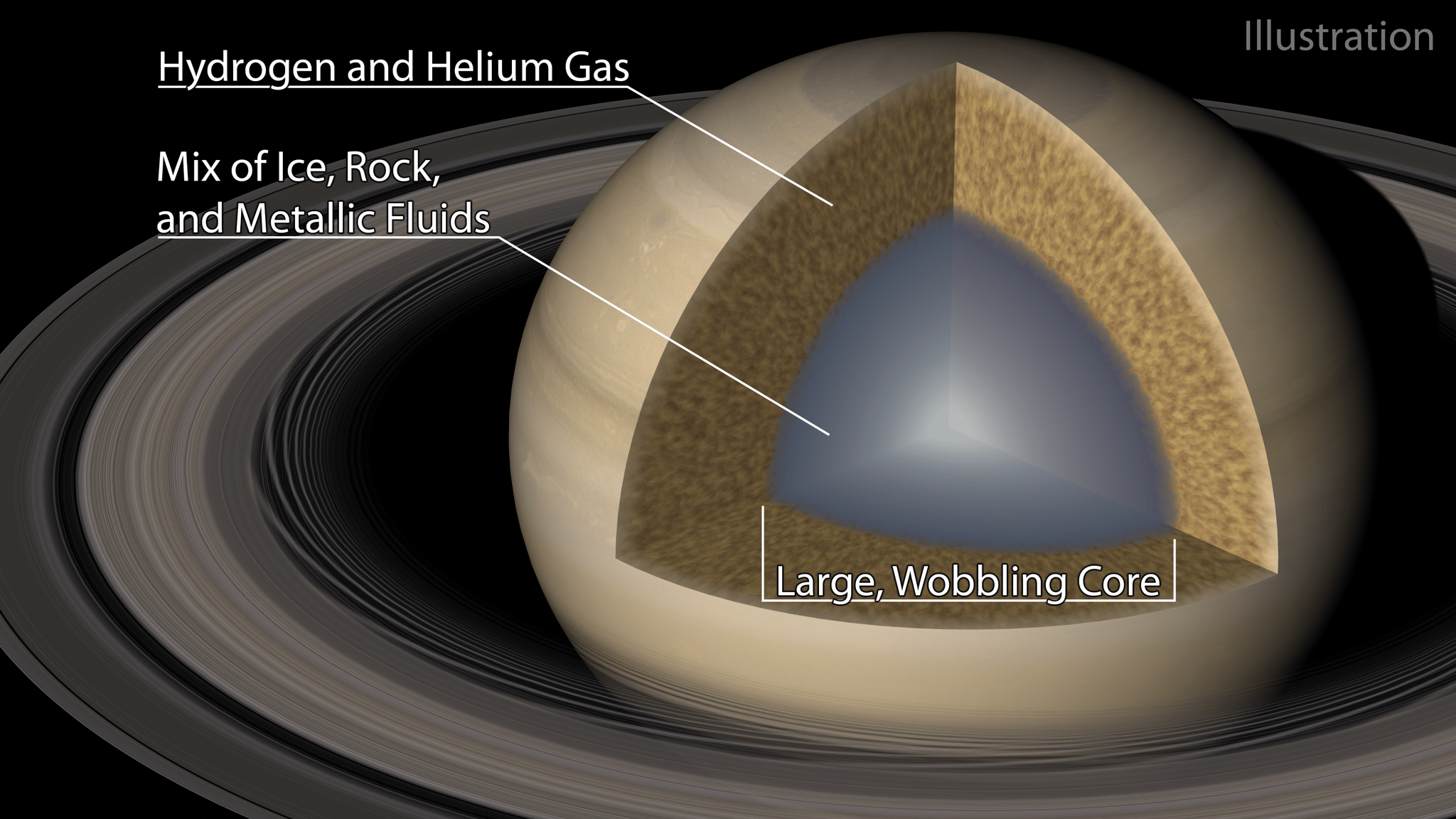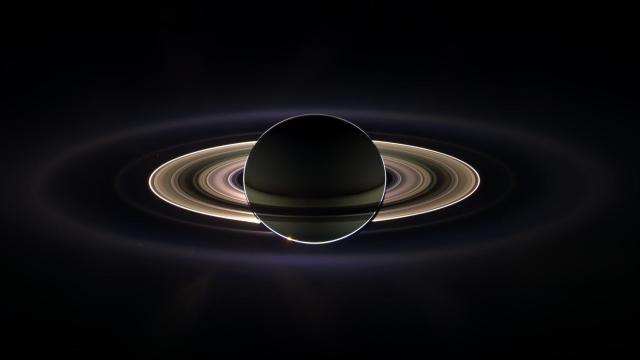A team of astrophysicists looking at data from the Cassini spacecraft’s tour of Saturn have estimated a new size for the planet’s core. Studying gravitational effects on the icy rings, the team determined that Saturn’s core is a combination of ice, rock, hydrogen, and helium about 50 times as massive as Earth, making it much more diffuse than previously thought.
“The conventional picture has it that Saturn’s interior has a neat division between a compact core of rocks and ices and an envelope of mostly hydrogen and helium. We found that contrary to this conventional picture, the core is actually ‘fuzzy’: all those same rocks and ices are there, but they are effectively blurred out over a huge fraction of the planet,” said Christopher Mankovich, a researcher at the California Institute of Technology and lead author of a paper on the findings, published today in Nature Astronomy.
The rocks and ice inside Saturn slowly give way to the more gassy parts of the planet as you move away from the core, he said. The team found that the core didn’t have a clear-cut end point; rather, it had a transition region that made up about 60% of Saturn’s entire diameter, making the core a huge part of the planet’s total size and much larger part than the 10% to 20% of a planet’s diameter that a more compact core would be.
Previously, Saturn was thought to have a rocky, metallic core under all that frigid, fluid gas. “When the observations were limited to the traditional gravity field data, the compact core model did a fine job,” Mankovich said, but the newer data from Cassini has given us a different, better picture of the planet’s insides. As National Geographic reported in 2015, the idea of studying Saturn’s interior using its rings has been floating around for the past few decades. But Cassini, in its 13 years of flying through Saturn’s rings (before it ran out of fuel in 2017) offered up the actual data on those dazzling structures and the processes within them.

Saturn can be thought of as a giant space blender, spinning its constituent elements of ice, rock, and gases that are in some places so cold they behave like fluids. The planet’s surface moves a little bit in all the hubbub — about 0.91 m every couple hours, placid for an object its size — and that wobble causes fluctuations in the planet’s gravitational field, which stretches outwards in spirals to the planet’s rings, distorting them. The icy particles that make up Saturn’s rings move in response to those gravitational changes from the planet’s sloshing insides, tantamount to seismic activity for a planet that is not rocky.
The rings are a plane for astrophysical research that makes Saturn unique among the other gas giants, like Jupiter, which lack such a useful access point to the interior. Mankovich said the new findings about Saturn add credence to the idea that gas giant evolution is a gradual process, beginning with the building of a core from the coagulation of bits of space rock and then proceeding to accreting gas to form the rest of the planet.
This is only the latest in what has been a string of insights from Cassini on the Saturnian interior and the processes that could be induced by it. More Cassini data on other oscillations has yet to be looked at, and mysterious accelerations felt by the spacecraft in the later stages of its operation have yet to be explained. It may be a while before we return to Saturn with another spacecraft (the limelight is currently on Venus and Mars), but thankfully Cassini left astrophysicists with their hands full.
More: Cassini Dropped Its Most Mind-Blowing Look at Saturn’s Rings Yet
